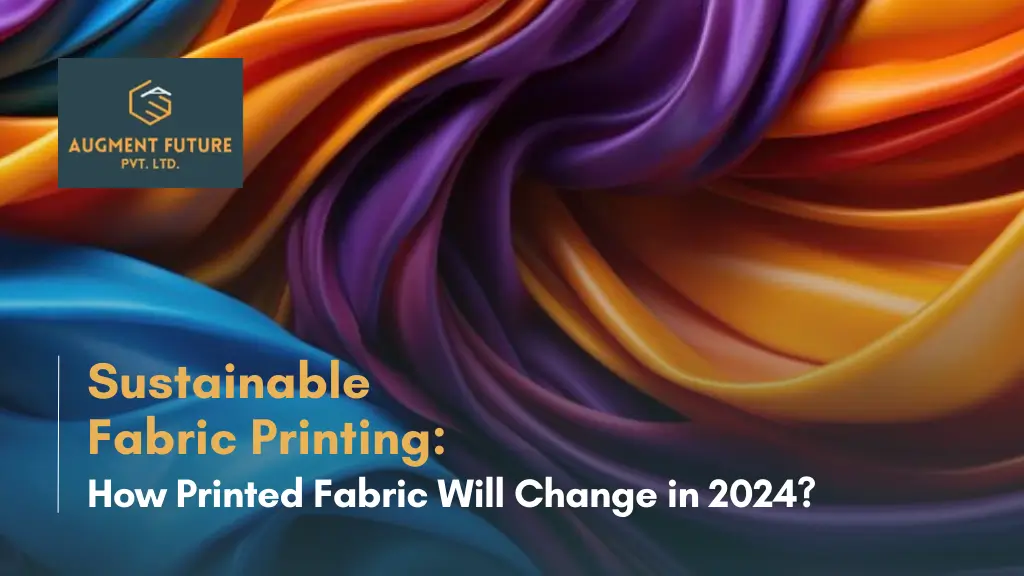In recent years, there has been a growing emphasis on sustainability in various industries, and the fabric printing industry is no exception. As we look ahead to the year 2024, it is evident that sustainable fabric printing is set to transform the way printed fabric is produced and consumed. This article explores the concept of sustainable fabric printing, discusses the current state of fabric printing, envisions the future of the industry, and highlights the benefits and challenges associated with adopting sustainable practices.
Understanding Sustainable Fabric Printing
Fabric printing, in essence, refers to the process of applying colours, patterns, and designs to fabric surfaces. However, sustainable fabric printing goes beyond mere aesthetics; it encompasses a holistic approach that considers both environmental and socio-economic factors. By employing sustainable practices, fabric printing aims to minimize its ecological footprint while ensuring the well-being of workers involved in the production process.
When it comes to sustainable printed fabric, one key aspect to consider is the choice of materials. Opting for organic or recycled fabrics can significantly reduce the environmental impact of the printing process. Organic cotton, for example, is grown without the use of harmful pesticides and chemicals, making it a more sustainable option for fabric printing. Similarly, using recycled polyester helps divert plastic waste from landfills and oceans, contributing to a circular economy.
The Concept of Sustainability in Fabric Printing
At its core, sustainability in fabric printing revolves around reducing environmental impact and conserving resources. This involves employing techniques that use fewer chemicals and energy, optimizing water usage, and reducing waste generation. Additionally, sustainability encompasses social responsibility, ensuring worker safety, and fair labour practices throughout the supply chain.
Another crucial aspect of sustainable fabric printing is the concept of biodegradability. Choosing biodegradable inks and dyes ensures that the printed fabrics can easily decompose at the end of their life cycle, reducing environmental pollution. Furthermore, implementing closed-loop systems in printing facilities helps minimize water wastage and chemical runoff, promoting a more sustainable production process.
The Role of Technology in Sustainable Fabric Printing
Technological advancements play a crucial role in driving sustainable fabric printing. Innovations such as digital printed fabrics have significantly reduced water and chemical usage compared to traditional printing methods. Furthermore, the development of eco-friendly dyes and inks has paved the way for more sustainable fabric printing solutions.
Advancements in printing machinery have also led to increased efficiency and precision in colour application, minimizing errors and reducing material waste. By investing in state-of-the-art printing equipment, manufacturers can enhance their sustainability efforts and meet the growing demand for eco-conscious textile products.
The Current State of Fabric Printing
Before delving into the future of fabric printing, it is essential to understand the existing landscape. Traditional fabric printing techniques, such as screen printing and block printing, have long been the industry standards. While these methods have their merits, they often require substantial amounts of water, chemicals, and energy. Consequently, the environmental impact of current printing techniques cannot be overlooked.
As technology advances and consumer demand for sustainable practices grows, the textile industry is exploring innovative solutions to reduce its ecological footprint. One such development is digital print fabric, which offers a more environmentally friendly alternative to traditional methods. By utilizing digital files to directly apply designs onto fabric, this technique eliminates the need for screens or blocks, significantly reducing water and chemical usage.
Traditional Methods of Fabric Printing
Screen printing, which involves transferring ink through a fine mesh, has been widely used due to its versatility and ability to produce intricate designs. Block printing, on the other hand, involves manually applying designs using carved blocks. While these methods have been employed for centuries, they do have limitations in terms of sustainability and efficiency.
Despite their historical significance, traditional fabric printing techniques have come under scrutiny for their environmental impact. High water consumption, extensive chemical usage, and harmful waste discharge are major concerns associated with these methods. Additionally, the reliance on non-renewable energy sources exacerbates the carbon footprint of fabric printing.
The Future of Fabric Printing: 2024 and Beyond
As we approach 2024, the fabric printing industry is poised for transformative changes. Advancements in technology, coupled with increasing awareness of sustainability, are driving the evolution of fabric printing techniques. Let’s explore the predicted changes in fabric printing that will shape the future.
With the rapid pace of innovation in the fabric printing industry, experts predict that by 2024, we will witness a significant shift towards personalized and on-demand fabric printing services. This customization trend will allow consumers to create unique designs tailored to their preferences, leading to a more diverse and creative range of fabric options in the market.
Predicted Changes in Fabric Printing Techniques
One of the key transformations anticipated in fabric printing is the wider adoption of digital printing technology. Digital printing on fabric offers reduced water consumption, eliminates the need for screens or blocks, and enables faster production. Furthermore, advancements in 3D printing hold the promise of creating intricate and sustainable fabric designs.
Moreover, the integration of artificial intelligence (AI) and machine learning algorithms into fabric printing processes is expected to revolutionize the industry. AI-powered systems will optimize colour accuracy, design placement, and production efficiency, resulting in higher-quality prints and reduced waste.
The Impact of Sustainability on Future Fabric Printing
Sustainability will undoubtedly be a driving force behind the future of fabric printing. The increasing demand for sustainable products and the push for circular economies will foster the development of eco-friendly fabric dyes and inks. Additionally, there will be a focus on supply chain transparency and fair trade practices to ensure ethical fabric production.
Furthermore, the concept of upcycling and repurposing textiles will gain traction in the fabric printing sector, leading to the creation of innovative techniques that minimize waste and promote a more environmentally conscious approach to manufacturing. This shift towards sustainable practices will not only benefit the planet but also resonate with consumers who prioritize ethical and eco-friendly products.
Benefits of Sustainable Fabric Printing
The shift towards sustainable fabric printing is not only beneficial for the environment but also offers economic advantages for businesses. Let’s explore some of the key benefits associated with adopting sustainable practices in fabric printing.
Environmental Benefits of Sustainable Practices
By reducing water and chemical usage, as well as minimizing waste generation, sustainable fabric printing significantly reduces its ecological impact. This, in turn, helps conserve natural resources, mitigates pollution, and contributes to a greener and cleaner planet.
Another important environmental benefit of sustainable fabric printing is the reduction of carbon footprint. Traditional fabric printing methods often involve high energy consumption and emissions, contributing to climate change. In contrast, sustainable practices prioritize energy-efficient technologies and renewable energy sources, leading to lower greenhouse gas emissions and a more sustainable production process.
Economic Advantages of Sustainable Fabric Printing
Sustainable fabric printing offers economic advantages for both businesses and consumers. Businesses can benefit from reduced operating costs due to lower energy consumption, increased operational efficiency, and improved resource management. Moreover, consumers are increasingly seeking sustainable products, which can translate into higher demand and market opportunities.
Furthermore, adopting sustainable fabric printing practices can enhance brand reputation and customer loyalty. Companies that prioritize sustainability demonstrate their commitment to social and environmental responsibility, resonating with conscious consumers. This positive brand image can lead to increased customer trust, brand recognition, and long-term competitiveness in the market.
Challenges and Solutions in Sustainable Fabric Printing
While the transition to sustainable fabric printing is promising, it is not without its challenges. Overcoming these obstacles requires innovative solutions and collective efforts from industry stakeholders. Let’s explore some of the challenges and potential solutions.
Overcoming Obstacles in Implementing Sustainable Techniques
The adoption of sustainable fabric printing techniques can sometimes be hindered by the initial costs of transitioning from traditional methods. However, investments in technology and infrastructure improvements can lead to long-term savings and a more sustainable business model. Collaboration between fabric producers, textile manufacturers, and printing companies is also crucial in driving this change.
One of the challenges faced in implementing sustainable fabric printing techniques is the need for specialized equipment and machinery. This can be a barrier for small-scale businesses or those with limited resources. However, innovative solutions are emerging to address this issue. For example, some organizations are exploring the concept of shared facilities, where multiple businesses can access the necessary equipment and infrastructure on a pay-per-use basis. This not only reduces the financial burden but also promotes collaboration and knowledge sharing within the industry.
Innovative Solutions for Sustainable Fabric Printing
To overcome the challenges associated with sustainable fabric printing, innovative solutions are emerging. For instance, research and development are focused on creating bio-based dyes and inks derived from natural sources, reducing the reliance on chemicals. This not only minimizes the environmental impact but also improves the safety and health of workers involved in the printing process.
Another innovative solution being explored is the use of digital printing technologies. Unlike traditional methods that often result in excessive water and energy consumption, digital printing allows for precise colour application, reducing waste and minimizing the use of resources. Additionally, digital print fabric offers the flexibility to produce smaller batches, enabling businesses to meet the growing demand for personalized and customized products while minimizing excess inventory.
Furthermore, recycling and upcycling techniques can be employed to minimize fabric waste, thereby closing the loop on textile production. By repurposing discarded fabrics or transforming them into new materials, the industry can significantly reduce its environmental footprint. This not only contributes to a circular economy but also opens up opportunities for creative design and innovation.
In conclusion, sustainable printed fabric is poised to revolutionize the industry in 2024 and beyond. By embracing sustainable practices, fabric printing can reduce its environmental impact, ensure worker well-being, and capitalize on economic advantages. Technological advancements, increased consumer demand for sustainable products, and collaborative efforts across the supply chain will be key drivers of change. As the industry adapts to the changing landscape, sustainable fabric printing will not only provide creative and vibrant designs but also contribute to a more sustainable and responsible future.
Leading the Sustainable Fabric Printing Revolution in 2024
In 2024, sustainable fabric printing is set to revolutionize the textile industry, and Augment Future Pvt Ltd is at the forefront of this transformation. Specializing in eco-friendly digital printing solutions, we offer a wide range of printed fabrics online, including digital print cotton fabric and printed rayon fabric. Our advanced digital printing technology not only reduces waste and water usage but also ensures vibrant, long-lasting designs. Augment Future is committed to helping businesses create stunning, sustainable products that align with the growing demand for environmentally responsible fashion and home decor.
Services by Augment Future – Fashion Printing, Home Furnishing Printing, Bulk Printing, Colour Matching, Consultation and Design Assistance, Customised Printing.
Fabrics – Cotton Cambric Fabric, Floral Print Cotton Fabric, Muslin Cotton Fabric, Printed Georgette Fabric, Printed Fabric Online, Printed Rayon Fabric, Printed Cotton Shirt Fabric, Floral Print Fabric, Digital Print Cotton Fabric, Digital Print Fabric, Digital Print Shirt Fabric.






